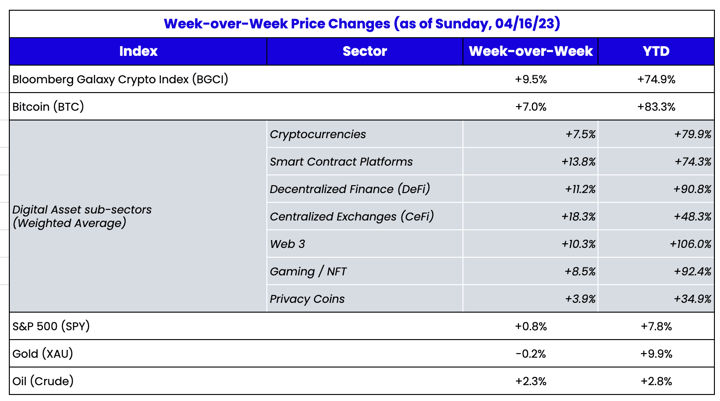


The contrarian trade has worked all year. While some of the contrarian success has been due to the unwind of crowded trades, most of it was due to consensus just being flat out wrong, especially regarding interpretation of investor behavior around key events.
This past week, the Ethereum blockchain successfully completed its 15th hard fork—Shanghai—which primarily activated staked ETH withdrawals and marked the completion of Ethereum’s transition to a proof-of-stake (PoS) consensus protocol. For some reason, there were numerous claims that 1 million ETH (~$2B) would be sold instantly and it would be bearish for ETH. This analysis never made sense for a variety of reasons. First, it is impossible because Lido (which controls 30% of staking rewards) isn't unstaking until next month. Second, it assumed that individual home stakers who locked up ETH in late-2020 for an unknown amount of time would suddenly dump all of their ETH (and forgo future yield) at a loss and convert into fiat or stablecoins (which became even more unlikely post the March banking crisis of confidence). Further, these claims didn’t recognize that stakers cannot withdraw ETH instantly; staked ETH takes 4-5 days to access.
Expectations of large outflows did not materialize. As Galaxy Digital wrote in their weekly note to clients:
“Deeper analysis of withdrawal activity on Ethereum since Shanghai indicates that the vast majority of withdrawals processed are partial, representing Beacon Chain issuance rewards, not full, which would conversely represent validators exiting the network and unstaking their principal balance of 32 ETH. Of the full withdrawals process on Ethereum in the first 24 hours after Shanghai, 97% of them have been initiated by cryptocurrency exchange Kraken, which earlier this year was forced to shut down their staking-as-a-service product due to enforcement actions by the SEC. Therefore, contrary to some Ethereum critics’ expectations, it is clear that Ethereum validators have not been ardently waiting for the activation of Shanghai to dump their ETH. Rather, the vast majority of Ethereum validators are continuing to stake, and the ones that are not are predominantly validators operated by a crypto exchange retiring their staking operations.”
Disclaimer: This commentary is provided as general information only and is in no way intended as investment advice, investment research, legal advice, tax advice, a research report, or a recommendation. Any decision to invest or take any other action with respect to any investments discussed in this commentary may involve risks not discussed, and therefore, such decisions should not be based solely on the information contained in this document. Please consult your own financial/legal/tax professional.
Statements in this communication may include forward-looking information and/or may be based on various assumptions. The forward-looking statements and other views or opinions expressed are those of the author, and are made as of the date of this publication. Actual future results or occurrences may differ significantly from those anticipated and there is no guarantee that any particular outcome will come to pass. The statements made herein are subject to change at any time. Arca disclaims any obligation to update or revise any statements or views expressed herein. Past performance is not a guarantee of future results and there can be no assurance that any future results will be realized. Some or all of the information provided herein may be or be based on statements of opinion. In addition, certain information provided herein may be based on third-party sources, which is believed to be accurate, but has not been independently verified. Arca and/or certain of its affiliates and/or clients may now, or in the future, hold a financial interest in investments that are the same as or substantially similar to the investments discussed in this commentary. No claims are made as to the profitability of such financial interests, now, in the past or in the future and Arca and/or its clients may sell such financial interests at any time. The information provided herein is not intended to be, nor should it be construed as an offer to sell or a solicitation of any offer to buy any securities, or a solicitation to provide investment advisory services.
These Stories on Market Recap